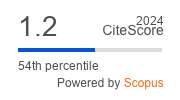Basic Characteristics of the Development of Organisational Structures of the Catholic Church in Slovenia
DOI:
https://doi.org/10.4335/30Abstract
Different organisational structures of the Catholic Church in Slovenia were a reflection of the circumstances in the Christian community in the Central European region. Being a basic structure, a diocese has existed since the antique period. The diocese is a religious community with a centre in a large settlement (civitas). With the spread of Christianity into the rural areas and into the peasant environment, parishes began to come into existence. In historiography, the terms 'primitive parishes' began to be used to refer to the oldest parishes. They were characterised by their vastness. The number of primitive parishes increased in the 12th century. Due to remoteness of diocesan centres from the communities in rural areas and because of the inability of bishops to be in touch with the priests in rural areas, intermediate stages of organisation were coming into existence during centuries, i.e., archdeaconries and deaneries at some places. Some important changes occurred in the operation of the Catholic Church and in its organisation in Slovenia during the years after the Second World War. New parishes were established. The change of the state boundaries required changing the diocesan boundaries. Finally, the creation of the independent state of the Republic of Slovenia required a new setting up of the pastoral work and a new territorial organisation of dioceses. KEY WORDS: • Slovenia • Catholic Church • metropolis • diocese • archdeaconry • deanery • parishDownloads
Published
2009-09-30
Issue
Section
Article
License
Copyright (c) 2009 Lex localis - Journal of Local Self-Government

This work is licensed under a Creative Commons Attribution-NonCommercial-NoDerivatives 4.0 International License.
How to Cite
Basic Characteristics of the Development of Organisational Structures of the Catholic Church in Slovenia. (2009). Lex Localis - Journal of Local Self-Government, 6(1), 3-39. https://doi.org/10.4335/30








